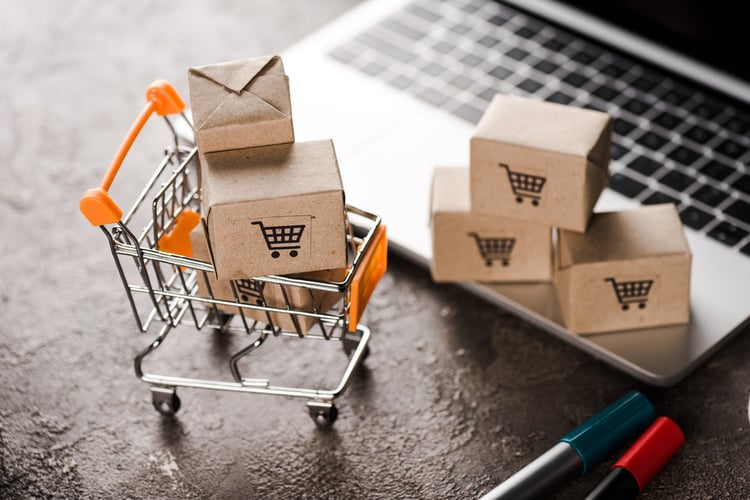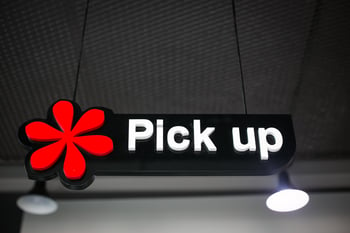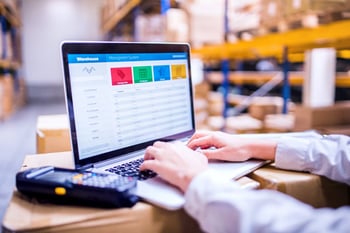
Customer expectations shifted drastically in 2023—but so did the way that many distribution and fulfillment centers worked to meet these expectations. Sustainability, speed, and customization are more important than ever. Here’s a look at what we can learn from fulfillment and eCommerce over the past year and how businesses are shifting their focus to adapt to new customer expectations.
Key Changes in Customer Expectations
In the past, customers basically looked for a combination of fair pricing and good quality among the brands they supported. While these are still important factors, customer expectations have changed quite a bit over the past several years.
Salesforce recently surveyed 14,300 consumers globally to find out what they value the most. According to their latest research, 80% of customers now consider the “experience” provided by the company just as important as the products or services. Some specific expectations include:
- Customers expect more connections across departments, meaning they don’t want to repeatedly explain their wants and needs.
- Customers expect better personalization, even as their own preferences and needs evolve.
- Customers expect more convenience and choices from the brands they support.
- Customers expect brands to behave honestly and ethically, which includes protecting personal data and protecting the environment.
Lessons Learned from Fulfillment and eCommerce in 2023
Since Cyber Week, the period between Thanksgiving and Cyber Monday, just passed, that’s an excellent place to examine for recent results. According to Salesforce data, global online Cyber Week sales rose 6% year-over-year, with online sales in the U.S. jumping 5%. Some key findings include:
- Consumers are shopping on mobile devices. A record-breaking 79% of eCommerce traffic during this period came from mobile devices, with roughly 10% coming from social media referrals.
- AI is helping shoppers. Consumers are taking advantage of personalizing shopping and checkout experiences, some of which are driven by artificial intelligence (AI). AI-powered solutions are sending targeted offers, assisting with support before the sale through chat, and making personalized product recommendations.
- Alternative payment methods are easing strain. Even with dips in inflation levels, many consumers are facing affordability issues. More eCommerce sellers are offering alternative payment options, like Buy Now Pay Later (BNPL), to consumers.
 Consumers hold out for discounts. A large portion of sales, particularly in electronics, comes from pent-up demand. Consumers are more educated and will hold out until major holidays for the best discounts on certain items.
Consumers hold out for discounts. A large portion of sales, particularly in electronics, comes from pent-up demand. Consumers are more educated and will hold out until major holidays for the best discounts on certain items. - Not everyone wants curbside pickup. While it’s a good option to have in an omnichannel fulfillment strategy, not every consumer wants to drive to their local store to pick up an order. In fact, fewer people in 2023 used Buy Online Pickup in Store (BOPIS) than the prior year.
- Customers prefer free returns. According to a Ryder eCommerce study, 56% of respondents won’t buy from a company that doesn’t offer free returns.
- Consumers will still buy if you’re transparent. Some businesses were caught off guard with high product sales or lingering supply chain issues. Consumers are willing to forego “fast shipping” as long as businesses are transparent about their situation and timeline.
How Businesses Are Improving Their Strategies Moving Forward
As we head into a new year, eCommerce sellers and order fulfillment partners will want to take a look at the recent lessons learned in this industry and apply some new strategies. Here are how these industries may be improving their approaches moving forward.
High Visibility in Inventory
 Customers don’t want to buy items that are out of stock, and ideally, eCommerce sellers want to avoid upset customers and stockout situations. More and more eCommerce sellers and fulfillment partners are adopting RFID technology for inventory and supply chain management purposes. These small “tags” can be read en masse and deliver real-time data about products that sellers can even share with customers on a website, such as a message saying “5 items remaining,” “in stock,” or “low stock.”
Customers don’t want to buy items that are out of stock, and ideally, eCommerce sellers want to avoid upset customers and stockout situations. More and more eCommerce sellers and fulfillment partners are adopting RFID technology for inventory and supply chain management purposes. These small “tags” can be read en masse and deliver real-time data about products that sellers can even share with customers on a website, such as a message saying “5 items remaining,” “in stock,” or “low stock.”
Faster Delivery
Customers love getting their products in hand quickly, and eCommerce businesses are becoming more efficient at accomplishing this. According to Shippo’s 2023 eCommerce Benchmarks report, delivery times are getting faster for logistics providers. In 2022, the average time was 3.4 days, which dropped to 3.1 days in 2023. These faster delivery times can be attributed to leveraging more automation solutions in the warehouse, partnering with better carrier networks, and fulfilling some orders closer to customers.
Varied Fulfillment Options
Even with a drop in customers opting for curbside pickup, omnichannel fulfillment will continue to be a positive strategy for eCommerce sellers with a brick-and-mortar presence. Giving customers options regarding how they purchase, obtain, and return products can only serve to improve the overall customer experience.
Improved Transparency in Tracking
Whether an eCommerce business can deliver an order in two days or six, what elevates the customer experience the most is keeping the buyers in the loop. Given that 96% of customers admit to checking order tracking on a business’ website at least once they place an order, it’s vital that eCommerce sellers provide this transparency. Fortunately, this is easy enough to do using RFID technology, which provides real-time tracking.
More Eco-Friendly Practices
For many customers, a business’ actions and stance toward being socially responsible is a major factor in deciding to support that brand. By choosing more eco-friendly practices, such as running a sustainable warehouse and using recyclable packaging, eCommerce sellers can show customers they are doing their part to protect the environment.
Better Data Security
Consumers seem to have a love-hate relationship with AI and social media. While many are using these tools quite a bit, they remain suspicious of anything that might jeopardize their privacy or even steal their data. Brands that want to be successful must put safeguards in place to protect consumer data and avoid being intrusive when offering personalized shopping experiences.
While fair prices are still important, today’s customers expect much more than the brands that earn their business. eCommerce and fulfillment businesses are increasingly leveraging technology solutions and more eco-friendly practices to deliver personalized and proactive service to customers, which improves overall results.











